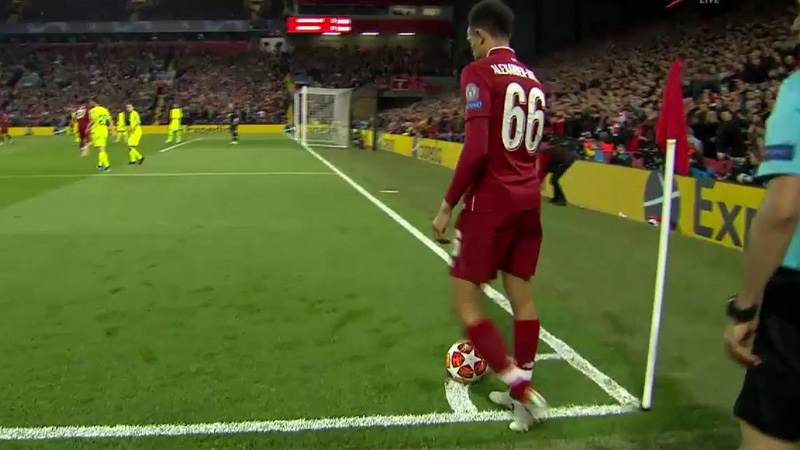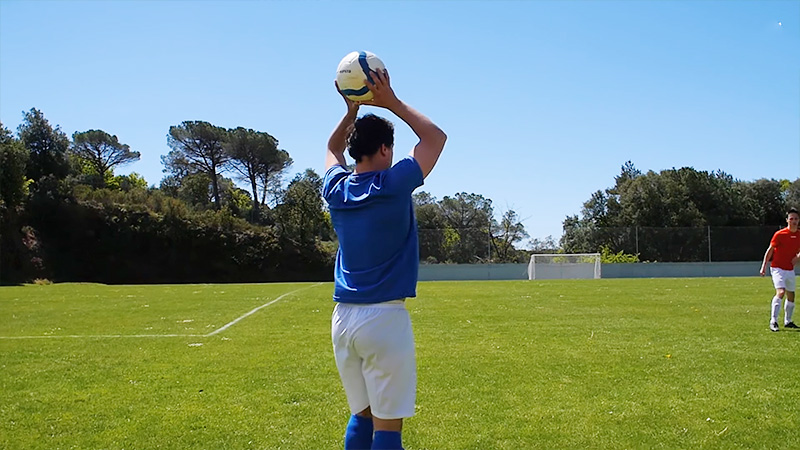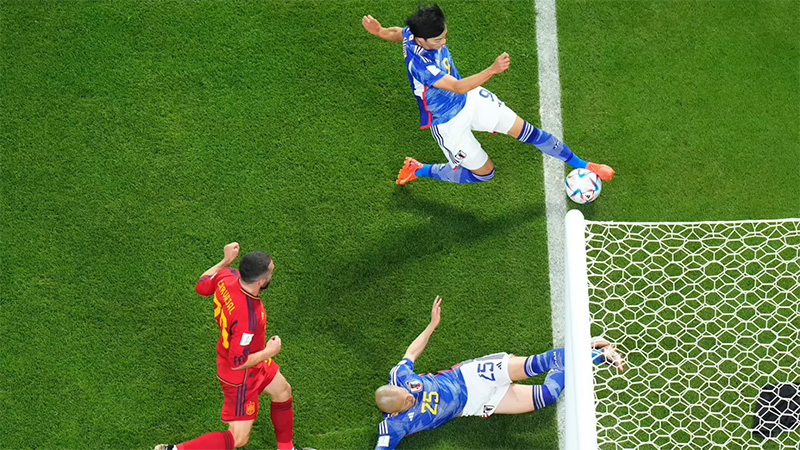Soccer, known as football in many parts of the world, is a globally adored sport that captivates millions of fans with its fast-paced action and strategic gameplay.
As with any sport, soccer follows a set of rules to ensure fair play and maintain the integrity of the game.
Among these rules are those governing what happens when the ball goes out of bounds. The out-of-bounds rules play a crucial role in restarting play, determining possession, and creating scoring opportunities for both teams.
Understanding these rules is vital for players, coaches, and referees to maintain a smooth and exciting flow of the game.
In this exploration, we will delve into the soccer out-of-bounds rules, examining the procedures for throw-ins, goal kicks, and corner kicks and how these rules impact the dynamics of the match.
Soccer Out Of Bounds Rules
In soccer, the out-of-bounds rules are essential for determining when the ball has gone beyond the boundaries of the playing field.
These rules help maintain fairness, control, and proper gameplay during a match.
Here are the key points regarding the out-of-bounds rules:
Throw-In
When the ball crosses the touchline, which runs along the length of the field, the opposing team is awarded a throw-in.
The throw-in is taken by a player from the team opposite to the one that last touched the ball before it went out of bounds.
The player must use both hands and deliver the ball from behind and over their head while keeping both feet on or behind the touchline.
Goal Kick
If the ball crosses the goal line and is last touched by an attacking player (the attacking team’s player), a goal kick is awarded to the defending team.
The goal kick is taken from anywhere within the six-yard box (also known as the goal area). The ball must leave the penalty area before it is considered in play.
Corner Kick
When the ball crosses the goal line and is last touched by a defending player (the defending team’s player), a corner kick is awarded to the attacking team. The corner kick is taken from the corner arc nearest to where the ball went out.
The ball is placed inside the arc, and the attacking team has the opportunity to deliver the ball into the penalty area.
Offside
Though not directly related to out-of-bounds, the offside rule comes into play when an attacking player is positioned beyond the last defender when the ball is passed to them.
If the player is deemed offside when the ball is played to them, an indirect free kick is awarded to the opposing team from where the offside violation occurred.
Understanding these out-of-bounds rules is crucial for players, coaches, and referees alike, as they significantly influence the flow and outcome of a soccer match.
By following these rules, the game maintains structure and ensures fair competition between the teams.
Corner Kicks

In soccer, a corner kick is a set-piece restart awarded to the attacking team when the defending team is responsible for the ball crossing the goal line but not entering the goal.
The corner kick is taken from the corner arc nearest to where the ball went out of play. This creates an excellent scoring opportunity for the attacking team.
Here’s how a corner kick works:
Placement
The ball is placed inside the corner arc at the intersection of the goal line and the touchline.
The attacking team can choose any player to take the corner kick, and they typically position the ball according to their preference for the upcoming play.
Defensive Setup
The defending team organizes its players in the penalty area to defend against the incoming corner kick. Some players may mark specific opponents, while others might be positioned to guard specific areas or zones.
The Kick
Once the attacking team is ready, the player taking the corner kick approaches the ball and delivers it into the penalty area.
The ball must leave the corner arc before it is considered in play, so the player taking the kick often aims to deliver the ball with an inswing or outswing trajectory, depending on the team’s strategy.
In-Play
As soon as the ball is kicked and leaves the corner arc, it is in play. Players from both teams can now contest for the ball.
The attacking team seeks to score a goal directly from the corner kick, while the defending team aims to clear the ball away from their goal and regain possession.
Scoring Opportunity
Corner kicks offer a great chance to score since the ball is delivered close to the opponent’s goal, and it is challenging for the defence to clear it effectively.
Attacking players often make runs into the penalty area to meet the ball with headers or shots.
Goal Kick or Play Continuation
If the ball goes out of play after the corner kick without resulting in a goal, the defending team is awarded a goal kick.
On the other hand, if the ball is deflected out of play by the attacking team, the defending team is awarded a throw-in.
Corner kicks can be crucial moments in a soccer match, and teams often practice specific set-piece plays to take advantage of these opportunities. Additionally, defending against corner kicks requires strong organization and communication among the defending players to prevent the opposing team from scoring.
Throw-Ins

In soccer, a throw-in is a method of restarting play when the ball goes out of bounds over the touchline, which is the boundary that runs along the length of the field.
When the ball crosses the touchline, the opposing team is awarded a throw-in, and the player who performs the throw-in must follow specific rules:
Proper Execution
The player taking the throw-in must use both hands to deliver the ball back into play.
The ball must start from behind and over the head of the thrower and be released from directly behind the head. Both feet must remain on or behind the touchline during the throw-in.
Location
The throw-in must occur from the point where the ball crosses the touchline. The player can step back from the touchline a few steps to gain momentum before making the throw, as long as the feet stay behind the line.
Opponent Distance
All opposing players must be at least two meters (approximately 6.5 feet) away from the player taking the throw-in. This rule ensures fair play and prevents interference from opponents during the throw.
Receiver
The ball is considered in play as soon as it leaves the thrower’s hands and enters the field of play. The throw-in can be received by any player, either from the thrower’s team or the opposing team.
Flag Recognition
In some cases, a flag is used by the assistant referee to indicate the spot where the throw-in should occur, especially when the ball goes out of bounds far from the field’s central area.
Foul Throw
If the throw-in is executed improperly, such as using one hand, stepping on or over the touchline, or not releasing the ball from behind and over the head, the throw-in is considered a foul throw. In this case, the opposing team is awarded a throw-in instead.
Throw-ins provide an opportunity for teams to regain possession, build an attack, or create goal-scoring opportunities.
Players with strong throwing ability can be valuable assets, especially in the offensive half of the field, as long throws can be delivered into the penalty area, posing a threat to the opposing defense.
Conversely, defending teams aim to intercept or clear the ball from dangerous areas to maintain control of the game.
What Is The Between A Goal Kick And A Corner Kick?
A goal kick and a corner kick are two different methods of restarting play in soccer when the ball goes out of bounds under specific circumstances.
The main differences between a goal kick and a corner kick are as follows:
Occurrence
- Goal Kick: A goal kick is awarded to the defending team when the ball crosses the goal line (the line between the goalposts) and is last touched by an attacking player. This means the attacking team was responsible for the ball going out of bounds, and the defending team got the goal kick.
- Corner Kick: A corner kick is awarded to the attacking team when the ball crosses the goal line and is last touched by a defending player. In this case, the defending team is responsible for the ball going out of bounds, giving the attacking team the corner kick.
Location of Restart
- Goal Kick: The goal kick is taken from anywhere within the six-yard box, also known as the goal area, in front of the defending team’s goal.
- Corner Kick: The corner kick is taken from the corner arc, located nearest to where the ball went out of bounds behind the defending team’s goal.
Defensive Setup
- Goal Kick: For a goal kick, all opposing players must be outside the penalty area until the ball is in play. This allows the defending team to build up their play from the back without immediate pressure from the attacking team.
- Corner Kick: During a corner kick, the defending team sets up its players inside the penalty area to defend against the incoming kick. Some players may mark specific opponents, while others cover designated areas to prevent the attacking team from scoring.
Scoring Opportunity
- Goal Kick: Goal kicks are primarily used to restart play and start an attacking move from the defending team’s area. While it is less common, an accurate long goal kick could lead to a scoring opportunity if the attacking team fails to defend it properly.
- Corner Kick: Corner kicks provide an excellent scoring opportunity for the attacking team. The ball is delivered close to the opponent’s goal, and attacking players often make runs into the penalty area to meet the ball with headers or shots.
Offside Rule
- Goal Kick: There is no offside violation directly from a goal kick. This means that the attacking team’s players can position themselves beyond the last defender before the ball is kicked without being penalized for offside.
- Corner Kick: The offside rule still applies during a corner kick. Attacking players must be mindful of their positioning to avoid being in an offside position when the ball is delivered.
Overall, goal kicks are used to restart play from the defending team’s goal area, while corner kicks offer an excellent scoring opportunity for the attacking team from the corner arc near the defending team’s goal.
Understanding the differences between these two types of kicks is essential for players, coaches, and referees to ensure fair play and proper execution during a soccer match.
FAQ
When is a throw-in awarded in soccer?
A throw-in is awarded in soccer when the ball fully crosses the touchline (sideline) on the field. The team opposing the one that last touched the ball before it went out of bounds is granted the throw-in.
What happens during a goal kick in soccer?
A goal kick is awarded in soccer when the ball fully crosses the goal line (the line between the goalposts), and the last player to touch the ball is from the attacking team. The defending team takes the goal kick, and it can be taken from anywhere within the six-yard box, also known as the goal area.
How is a corner kick awarded in soccer?
A corner kick is awarded in soccer when the ball fully crosses the goal line, and the last player to touch the ball is from the defending team. The attacking team receives the corner kick, and it is taken from the corner arc nearest to where the ball went out of bounds.
Can a player re-enter the field of play after going out of bounds in soccer?
Yes, a player can re-enter the field of play after going out of bounds, as long as it’s done safely and without interfering with play. If a player intentionally leaves the field to gain an advantage or waste time, the referee may caution them with a yellow card for unsporting behavior.
What happens if the ball fails to leave the penalty area during a goal kick in soccer?
If the ball fails to leave the penalty area during a goal kick, the goal kick is retaken. All players, except for the kicker, must remain outside the penalty area until the ball is in play.
Conclusion
The out-of-bounds rules in soccer are fundamental to the game’s structure and fair play. The procedures for throw-ins, goal kicks, and corner kicks are designed to restart play and provide opportunities for both teams to assert their tactics and skills.
A throw-in allows the game to resume along the touchlines, while goal kicks enable the defending team to build from the back and regain control. On the other hand, corner kicks create exciting moments for the attacking team to potentially score.
These rules ensure that soccer remains a game of balance and strategy, rewarding precision and teamwork.
As the sport continues to inspire athletes and fans worldwide, a firm grasp of the out-of-bounds rules remains crucial for all those involved in the beautiful game of soccer.







